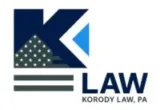While updating my book, Trying the Military Case: Court-Martial Advocacy, I spent some time reviewing recent developments in court-martial litigation over child pornography offenses in the military, which are charged under Article 134, UCMJ. In 2012, the President prescribed a child pornography offense under Article 134 prohibiting the possession, receipt, viewing, distribution, and production of child pornography. When the President lists examples of offenses under Article 134 in Part IV of the Manual for Courts-Martial (MCM), he is “not defining offenses but merely indicating various circumstances in which the elements of Article 134, UCMJ, could be met.” U.S. v. Jones, 68 M.J. 465, 471 (CAAF 2010). Article 134 has 3 “clauses” and child pornography can be charged under any of the 3. Under clause 1, it can be charged as conduct prejudicial to good order and discipline. Under clause 2, it can be charged as service discrediting. And, under clause 3, it can be charged as a violation of the United States Code provision prohibiting child pornography, 18 USC sec 2252A.
Most of the litigation surrounding child pornography cases relates to 1) whether the alleged “depictions” actually meet the definition of child pornography and 2) whether the government can demonstrate that the accused exercised domain and control over the electronic media where the child pornography was found. Rarely, if ever, are modern child pornography prosecutions based on hard copy media like photographs and magazines. Rather, they rest on digital files discovered during forensic computer examinations.
When charging a child pornography offense under Article 134, UCMJ using the President’s prescribed offense, the government must generally decide if it is proceeding under a theory, based on the two available definitions of child pornography in Part IV of the MCM, that the depictions involve the use of actual children or what appear to be children, stated in the statute as “obscene visual depictions of a minor engaging sexually explicit conduct” to pass constitutional muster and similar to the 2003 amendments to the United States Code offense which requires such images to be “graphic.” The theory of prosecution will determine the elements of the offense and proof required at trial. For example, if proceeding under an obscenity theory, the government will not be required to prove the images depict an actual child but will be required to prove obscenity. Identifying the prosecution theory and holding the government to its burden to prove each and every element of the offense is critical to a successful defense.
Second, whether or not the depictions involve nudity will be critical to defending a child pornography UCMJ prosecution. It is unclear whether a depiction of a virtual child or a child not identifiable as an actual child requires nudity to meet the requirement of obscenity under the definition found in Article 134. This is where trial level litigation will be critical since most images these days revolve around digital images.
It remains an open question as to whether child erotica is a viable offense under clause 1 or 2 of Article 134. “Unlike child pornography and obscenity, the conduct at issue in this case — possessing images of nude minors that fall into neither of those categories — implicates the protections of the First Amendment.” U.S. v. Moon, 73 M.J. 382 (CAAF 2014). Such a prosecution requires proof to demonstrate that the conduct falls outside the constitution protections afforded to servicemembers. And, the maximum punishment for such a conviction has been found to only 4 months confinement. See United States v. Beaty, 70 M.J. 39 (CAAF 2011). Possession of non-nude images of children that are not engaging in sexually explicit conduct, even if sexualized in some way, is not an offense under Article 134. U.S. v. Warner, 73 M.J. 1 (CAAF 2014).
A court-martial for the possession, receipt, or distribution of child pornography, child erotica, or any other image depicting a child in a sexual manner is a complex case. The defense must have a grasp not only on computer forensics but also the extensive and tangled case law applicable to such cases.
Mr. Korody is a civilian court-martial defense attorney who has vast experience litigating computer crime cases related to child pornography offenses. He has attended numerous courses relating to computer crimes and is familiar with the vast case law necessary to challenge the prosecution. He is a former Navy JAG who defends members of the Army, Navy, Marine Corps, Air Force, and Coast Guard facing allegations involving child pornography.
